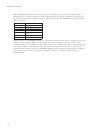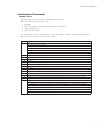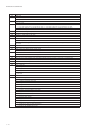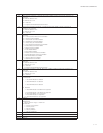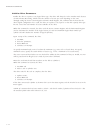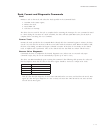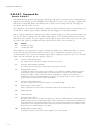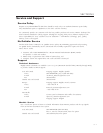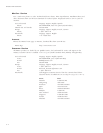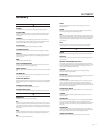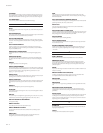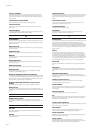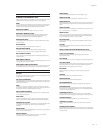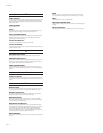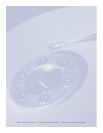
GLOSSARY
GL – 6
T
THIN-FILM HEAD
A magnetic transducer manufactured by deposition of magnetic and electrical materials
on a base material contrasted with prior art mechanical methods. Read/write heads
whose read/write element is deposited using integrated circuit techniques rather than
being manually wound.
THIN-FILM MEDIA
See plated thin film media.
TRACK
One surface of a cylinder. A path which contains reproducible information left on a
magnetic medium by recording means energized from a single channel.
TRACK-FOLLOWING SERVO
A closed-loop positioner control system that continuously corrects the position of the
disk drive’s heads by utilizing a reference track and a feedback loop in the head
positioning system. (See also closed loop.)
TRACKS PER INCH (TPI)
A measurement of radial density. Tracks per inch of disk radius.
TRACK POSITIONING
The method, both mechanical and electrical, used to position the heads over the correct
cylinder in a disk drive system.
U
UN-CORRECTABLE ERROR
An error that is not able to be overcome with Error Detection and Correction.
UNFORMATTED CAPACITY
Storage capacity of disk drive prior to formatting; also called the gross capacity. (See
format.) The raw capacity of a drive not taking into account the capacity loss due to
storage of the format control information on the disk surfaces.
UNRECOVERABLE ERROR
A read error falling outside the capability of an ECC mechanism to correct, or not
able to be overcome by rereading the data in question, with or without repositioning
the head.
V
VOICE COIL MOTOR
A positioning motor that uses the same principle as a voice coil in a loudspeaker. The
motor has no detent positions. The mechanical motion output of it can be either rotary
or linear.
W
WHITNEY HEAD
A successor to the original Winchester read/write head design. The primary change
was to make the flexure smaller and more rigid. First used in IBM 3370/3380.
WHITNEY TECHNOLOGY
A method of constructing a read/write head in a rigid disk drive using a Whitney
head. In all other details it is the same as Winchester technology.
WINCHESTER HEAD
The read/write head used in Winchester technology, non-removable media disk
drives. May be either a monolithic or composite type. It is aerodynamically designed
to fly within microinches of the disk surface.
WINCHESTER TECHNOLOGY
A method of constructing a rigid disk drive using concepts introduced in the IBM
model 3340 disk drive. The primary changes from prior technology was to lower the
mass of the slider, use of a monolithic slider, radically changing the design of the
flexure and having the slider come to rest on a lubricated disk surface when disk
rotation ceases. In addition to the above, a totally sealed chamber containing the read/
write heads and disks was used to protect against contamination.
WINDOW MARGIN
The amount of tolerance a read/write system has for transition jitter at a specified error
rate level.
WORD
A number of bits, typically a multiple of eight, processed in parallel (in a single
operation). Standard word lengths are 8, 16, 32 and 64 bits (1, 2, 4, or 8 bytes).
WRITE
The recording of flux reversals on a magnetic media.
WRITE PRE-COMPENSATION
The intentional time shifting of write data to offset the effects of bit shift in magnetic
recording.
WRITE GATE SIGNAL
A digital input signal level which causes the drive circuitry to record (write) data.



